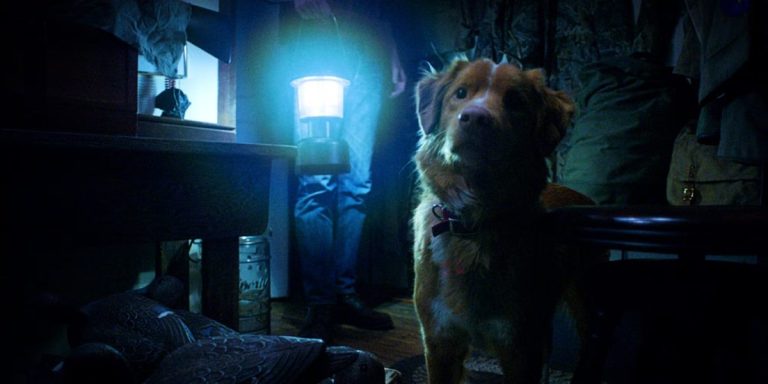“It was inevitable: the scent of bitter almonds always reminded him of the fate of unrequited love.” – These lines from Love in the Time of Cholera by Gabriel Garcia Marquez are my go-to whenever I watch a film about unfulfilled desires and longings. Past Lives (2023), written and directed by Celine Song, brings out the same ephemeral quality of unrequitedness in the relationship shared by Nora (played by Greta Lee) and Hae Sung (played by Teo Yoo).
The movie takes us through their lives as they age from their teens to their twenties and their thirties, the dynamic between them changing as Nora shifts to a different continent and their idea of love, identity and romance evolving from innocence to maturity. Song’s film is already hailed as one of the best movies of 2023, and we could not keep ourselves from deep-diving into its plot, themes and the significance of its ending to help bring out the essence of the movie better.
I highly recommend you watch Past Lives (2023) first before you engage in the many discussions about diasporic identity, language, and memory, which we have curated for you below because SPOILERS ALRET!
Past Lives (2023) Plot Summary & Movie Synopsis:
As a prologue to the story, Past Lives (2023) opens with a couple of onlookers trying to understand the relationship among the two men and an Asian woman sitting at a bar; one man being Asian while the other being white.
Immediately afterwards, we are transported to a day in Seoul, South Korea, from twenty four years ago. We see a girl (Na Young) and a boy (Hae Sung) walking home side by side. The girl is in tears because, we discover, that Hae Sung has secured the first grade while she came second. Soon after, we learn that Na Young’s family is immigrating to Toronto, and looking at the relationship Na Young shares with Hae Sung, her mother decides to take the children out on a date under parental supervision.
At this date, we find the two children playing in a park full of sculptures, while both their mothers discuss the decision to make the big move. The children hold hands as they go back home, showing us how deep their bond is at such a young age. Hae Sung is evidently upset with Na Young leaving town. But when they meet each other for the last time while heading home from school, they bid each other a brief adieu before their roads get forked.
Twelve years later, Na Young has changed her name to Nora, lives in New York and has been invited to an artist’s residency. Hae Sung, on the other hand, has completed his mandatory period of service in the military and gone back to college to study Engineering. One day, while talking with her mother, Nora finds out that Hae Sung has posted about her on one of the Facebook pages related to her father’s work.
She reaches out to him and soon the two are back in contact via Skype video calls, even if it means having to talk at midnight in New York and just before Hae Sung’s class hours in Seoul. It starts to feel as if they never were away from each other. Nora and Hae Sung become quickly attached to each other. One day, Nora confesses that she is spending most of her time thinking how she can go to Seoul to meet Hae Sung instead of focusing on the future that she wished to get access to through the act of double immigration.
It puts forward Na Young’s ambitious self (she said she was leaving South Korea to get the Nobel Prize as a twelve-year old), which is unable to even fathom the thought of going back to the place she comes from. She decides for them to stop talking for a bit so that both of them can go back to concentrating on their careers. Soon afterwards, she meets and falls in love with her future husband, Arthur, at the artist’s residency, while Hae Sung, although feeling dejected by Nora’s decision, meets with the woman he was going to be in a relationship for very many years before they take a break.
Twelve years pass by. Nora is now a playwright living with her husband and author, Arthur, in a tiny apartment at the East Village side in New York. Hae Sung, who has a job in Seoul now, is visiting New York, and we soon learn that Nora shall be meeting him after all these years. What follows next, is a meeting of old sweethearts who walk around the touristy places in New York city, generating feelings of longing and realisations between them both and Arthur.
Past Lives (2023) Themes Analyzed:
The Anxiety of Identity: An Immigrant’s Experience
Immigration makes Nora a part of the Korean-Canadian-American diaspora in North America. She spent twelve years of her life in Seoul, South Korea. But she is forced to adapt a new name – Nora – and habits prevalent in the West due to her family’s immigration to Toronto, Canada. Twelve years later, we find her living in the New York City, USA, ultimately settling down in an apartment on the East Village side with her husband. The act of immigrating is primary to understanding Nora’s character, which suffers from a crisis innately typical to immigrants.
Diasporic identities constantly throb with a sense of loss, anger, guilt and confusion. Their identities are essentially fragmented by the multicultural, even cosmopolitan, experience they undergo due to their temporal impermanence. The relationship they share with their homeland – in this case, Seoul – is convoluted by their perception of the place from their current state of belonging. Nora is no exception to this persisting anxiety of the immigrant experience.
When she first reconnects with Hae Sung, she is seen struggling with her Korean alphabets to communicate with him, revealing later that it was only with him and her mother that she spoke in Korean. In fact, she is Nora to the rest of the world, even to her mother. However, she continues to be Na Young to Hae Sung throughout the film.
In a brief moment of anger, she also confesses that she has doubly migrated to be able to live the life and the future she has always desired for herself. When they reconnect again after twelve years, Nora is quick to judge Hae Sung as being ‘so Korean,’ someone whose beliefs and opinions reek of being ‘Korean’ to her (like living with his parents). She goes on to contemplate about how being with him somehow makes her feel equally less and more Korean, that this feeling was different from the one she experiences when she is around her Korean-American friends.
Nora’s identity on meeting Hae Sung makes her feel ‘weird,’ as she puts it. Here, she is judging Hae Sung from the perspective of a privileged country citizen. She isn’t flouting at him, but she understands that his Korean identity is very different from her twice-removed Korean identity.
Perhaps, at the heart of the longing we experience between Nora and Hae Sung is the grave question of this inherent anxiety of cultural identity. Nora misses Seoul, and a way for her to be able to hold on to what Seoul was to her is meeting with Hae Sung, the childhood sweetheart who walked her home everyday from school.
The Shape, Sound and Sight of Memory
One of the most potent themes in Past Lives (2023) is the shape of Nora and Hae Sung’s memories of each other and how they keep getting re-constructed throughout their lives. After her first meeting with Hae Sung, Nora tells Arthur that it is a little bit impossible for her to believe that he has grown up to be an ordinary boy with an ordinary job living in Korea.
Her memory of him is restricted to the moments she spent with him growing up in Seoul and later to a face on her computer screen. So it is weird for her to grapple with him as a real human being when she meets him for the first time in twenty four years. Similarly, she thinks Hae Sung misses (and, maybe, longs to connect with) not who Nora is but the 12-year-old child she used to be back in school.
Memory is fluid; it is affected by various cognitive processes, including perception, beliefs, imagination, etc. Everytime Nora and Hae Sung reconnect, their reconstructive memory takes them back to their pre-teen years spent walking back together from school. In fact, Nora and Arthur share a moment of fond recollection over their memory of Nora’s relentless crying when he came first instead of her in class. It is clearly these memories from their childhood that bind Nora and Hae Sung together.
They are, otherwise, completely different human beings in their respective walks of life, shaped by the culture of the country of their residence. You could say that Nora’s way of remembering her childhood in Seoul and holding on to her Korean identity in the diaspora is through her memory of Hae Sung. The latter, who has been on the look out for her ever since she left Seoul, probably treats of his memories with Nora as an emotional anchor that helps him go through the trivialities of his everyday life.
Is it then matters of the heart or the human tendency to hold on to one’s favourite kind of memories as an anchor through the most desperate times in one’s life that binds Nora and Hae Sung? Song’s clever writing and direction render these lines blurred.
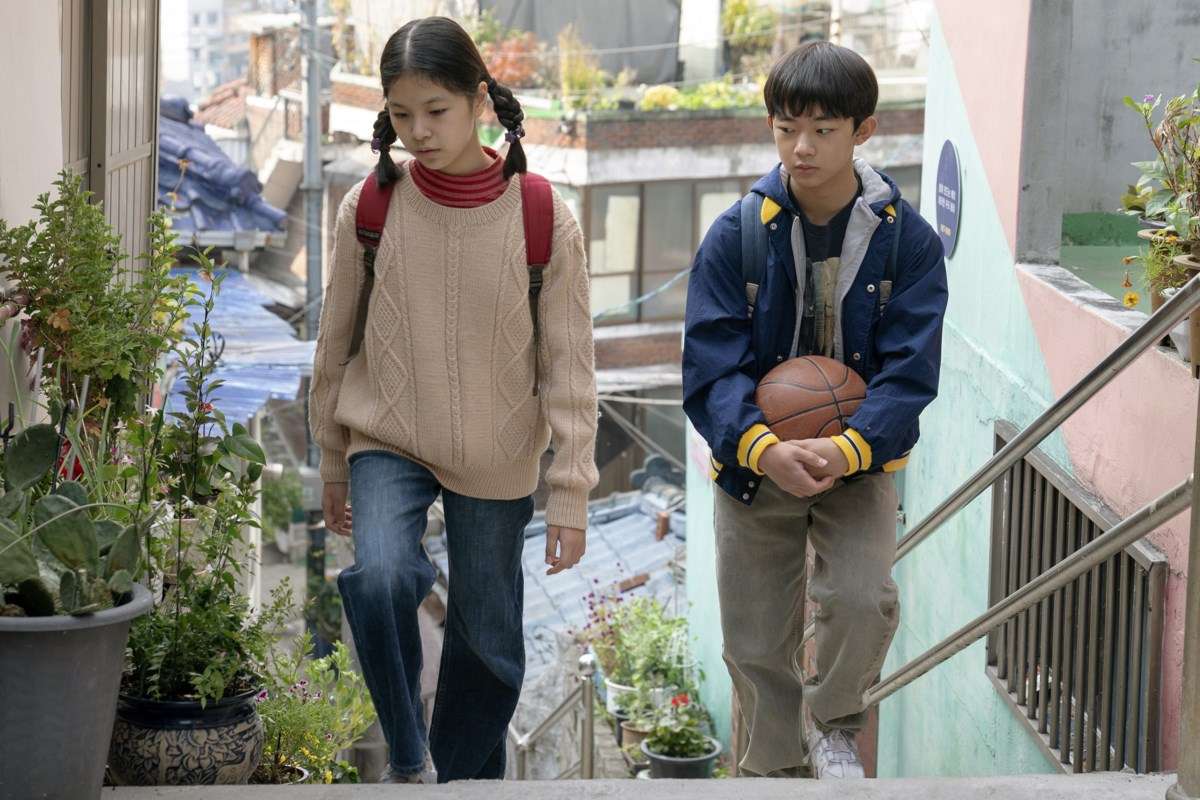
Language Stands for Distance and Closeness
Langugae plays a major role in the formation of one’s cultural identity. Nora, having migrated to Toronto with her family quite early in life, has adapted to the English language. However, she still speaks in Korean with her mother and with Hae Sung, once she reconnects with him. Nora’s husband, Arthur, at one point in the movie, tells Nora that she tends to mumble in Korean when she is dreaming, which makes Arthur feel alien to a part of her he can never fathom, no matter how hard he tries to learn Korean. He expresses his desire to learn Korean language and we are made familiar with his interest in Korean indoor games and cuisine. Nevertheless, nothing he does will get him closer to Nora’s Korean identity.
Hae Sung, on the other hand, is based out of South Korea and barely speaks English. When Nora, Hae Sung and Arthur step out for pasta on his last evening in New York, Nora acts as the translator between Hae Sung and Arthur. She is quickly able to switch between Korean and English, thanks to her diasporic identity that places her in between a Western and Eastern identity.
Being able to interact with Hae Sung in Korean opens her up to a contemplation about how her cultural identity, just like the language she speaks, has undergone a change due to the decisions she has made in her life and her diasporic identity. The air of stiff tension among the three of them in this scene can be read as a point in time when a part of Nora’s Koreanness clashes directly with her present, leading up to a moment where Hae Sung and Nora can fully open up about themselves and their feelings for each other even in Arthur’s presence.
Language, then, is both a marker of connection and distance in this movie. It is the Korean language that plays a major part in making Nora feel so deeply about Hae Sung while it is the same language that alienates a part of herself from her own husband.
What is the film about?
Past Lives (2023) is about two childhood sweethearts, Nora and Hae Sung, meeting each other twenty four years after they separated during their childhood. Nora’s family migrated to Canada while Hae Sung had stayed back in Seoul. Nora grows up to be a playwright who lives and works in New York City with her Jewish author husband, Arthur, while Hae Sung serves his time in the Korean army, studies to be an engineer and lands himself a job in the same field.
The film charts the moments leading up to their separation during childhood, their brief period of reconnecting twelve years later and finally their meeting in New York City. Nora and Hae Sung evidently share a longing for each other; however, the longing may not be related to feelings of love but a direct result of the friendship they shared as children, memories, and Nora’s anxiety about her diasporic identity, among others.
How many times do Nora and Hae Sung reconnect?
Nora and Hae Sung have the opportunity to connect twice, once every twelve years, since they part ways at the age of twelve. The first time, Nora and Hae Sung find each other over Facebook and quickly get into a habit of video calling each other over Skype. The second time, Nora and Hae Sung meeting in New York, when the latter is visiting the city (and the country) for a few days. We are informed that Nora had tried to meet Hae Sung when she was visiting Seoul with her fiance before her marriage seven years ago but the attempt was not fruitful. With the ending of the movie, it doesn’t appear that Nora and Hae Sung will meet or reconnect again, but one can only make wild conjectures in this case.
Why is Hae Sung visiting New York?
We come to know via Nora’s conversation with her husband, Arthur, that Hae Sung is visiting New York just to meet Nora. To put things in context, when Nora and Hae Sung reconnected over video calls twelve years since they parted ways, Nora had asked Hae Sung to fly down to New York City to meet her. However, Hae Sung made it clear that he would be able to take the trip only in a year or so’s time because he was to travel to China and learn Mandarin for his work. Twelve years since that conversation, Hae Sung has broken up with his long-standing partner and decided to take a trip to New York. His friends warn him against meeting Nora in the city, telling us that even they probably got a whiff of the intention behind his vacation plan.
Why is Nora Crying at the End of Past Lives (2023)?
After Hae Sung boards his Uber and leaves, we find a distraught Nora break into tears in the arms of her husband. We can only wonder if these tears come from the knowledge that she might never meet Hae Sung again, in this life, or from having finally reached a closure in her relationship with her childhood crush. She also probably realises that who she is in the present time is the direct result of the decisions she has taken in her life, possibly for the best, and it is her way of mourning the past, especially the 12 year-old-self she forever left behind in Seoul when she migrated to Canada.
Past Lives (2023) Ending Explained:
What is In-Yeon and is Nora and Hae Sung’s relationship in-yeon?
Once in New York, Nora and Hae Sung take no time to warm up to each other’s physical presence; you almost can’t tell, after the initially awkwardness has been hugged away by the two of them, that they haven’t seen each other in twenty-four years. They touch upon various topics in their conversation, including Nora’s early marriage with Arthur to obtain a green card in USA, Hae Sung’s temporary break in his relationship with his girlfriend, etc.
Back home, as Nora is talking about her meeting with Hae Sung, Arthur asks her if she is attracted to him and she suggests that she is unsure about it. It also shows that Arthur may be trying too hard to be supportive of her meeting her childhood fling and that he is a little jealous. Later at night, Arthur acknowledges that he is unable to connect with the Korean side of Nora’s identity, leaving him afraid about how she might emotionally respond to Hae Sung’s physical presence around her after all these years because he tapers into her the crisis of her diasporic identity.
He tells her that she dreams in Korean and he wishes to learn Korean to be able to get closer to her Korean identity. Arthur probes Nora to wonder whether she migrated only to lead the life she is currently leading in their cosy apartment with a Jewish, writer husband. Nora tells him that there is no way she would toss away her life with him and her rehearsals to run away with Hae Sung.
Next day, Nora and Hae Sung take a ferry ride together to see the Statue of Liberty and meet Arthur for dinner in the evening. Nora still seems to be the ambitious little girl she used to be, aiming for the Tony Award instead of the Nobel or the Pulitzer now, only she accepts that she has had to stop crying at the littlest inconvenience because there is no one to console her anymore like Hae Sung did.
When Arthur, Nora and Hae Sung step out for pasta, Nora takes upon the responsibility of acting as the translator between them to keep the conversations going. The air among them may be a little stiff with tension, but after a round of small talk at the bar, Hae Sung confesses to Nora (in Korean) that he can see now how South Korea would be a place too small to contain her ambitions. He also tells her that it was hurting him to meet her husband, who evidently loves Nora a lot.
He confesses that he missed her after they stopped talking and that to keep being who she was, it was important for her to leave, keeping intact the unique quality about her that he liked so much. Both Nora and Hae Sung are emotionally charged during this conversation – this is the exact same moment that we were shown during the prologue of the film. Both Hae Sung and Nora contemplate about what they may have been to each other in their past lives to be so intricately connected in this life.
While Arthur is paying up, Hae Sung briefly communicates with him in English, apologising for communicating in Korean with Nora in his presence. The latter understands and empathises with his choice of language since he was meeting Nora after so many years. They briefly joke about in-yeon before he prepares for his departure. Nora decides to see him off to his Uber, where they both stand gazing at each other for a long time as if getting one final look at one another before their lives tear them apart.
In-yeon is a Korean word that refers to the ties between two individuals. It is uniquely descriptive of the Korean idea of fate or destiny that stems from Buddhist philosophy. According to this word, if two people even brush against each other on the streets, it means that may have had a connection with each other in their past lives. Similarly, if two people are married in this life, it means that they must have shared 8000 or more layers of connections between them in their previous lives to be able to experience this connection. Nora adds, after she explains this idea in the film, some humour to the idea by saying that it is the Korean people’s way of subtly flirting with one another.
We don’t know whether Nora and Hae Hung’s life are in-yeon because in this life they have spent a considerable amount of time with each other and longing for one another. However, as Hae Sung puts in before he boards the Uber for his departure as he bids Nora adieu (just like he did 24 years ago), this may be the past life to an already existing future life where they are together considering how many layers of connection they already share in this life.
Nora, weeping, goes back to leading her life with Arthur in their tiny Easy Village apartment in New York City. It is the profoundness of this idea that makes the connection between Nora and Hae Sung immediately visceral and relatable. It makes us want to ponder upon the nature of the many human relationships existing in our daily lives and how our fates may be inextricably linked to them.





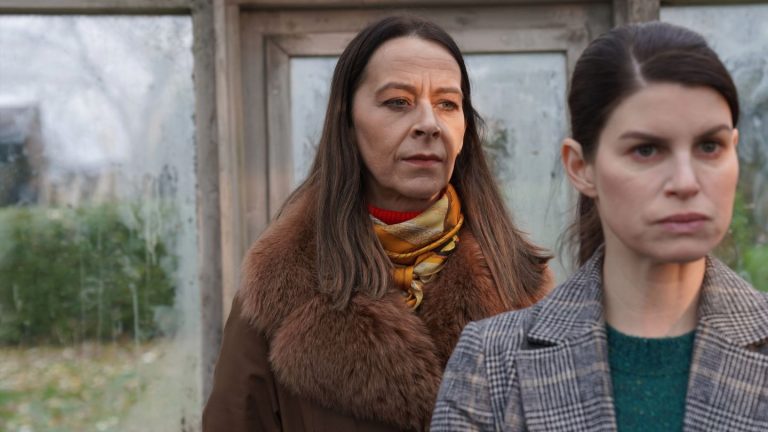
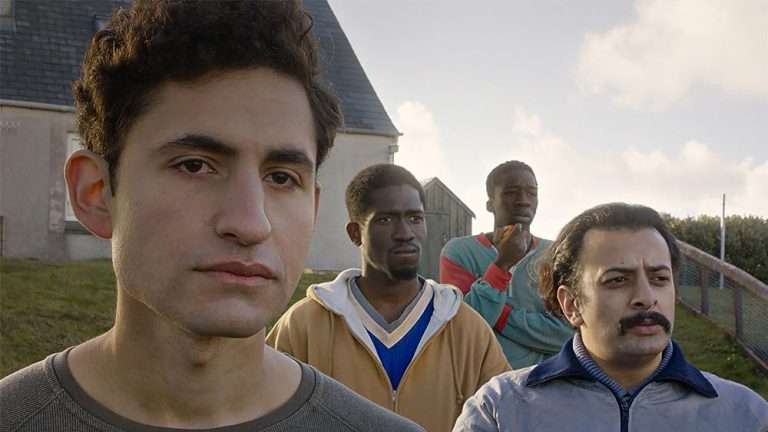
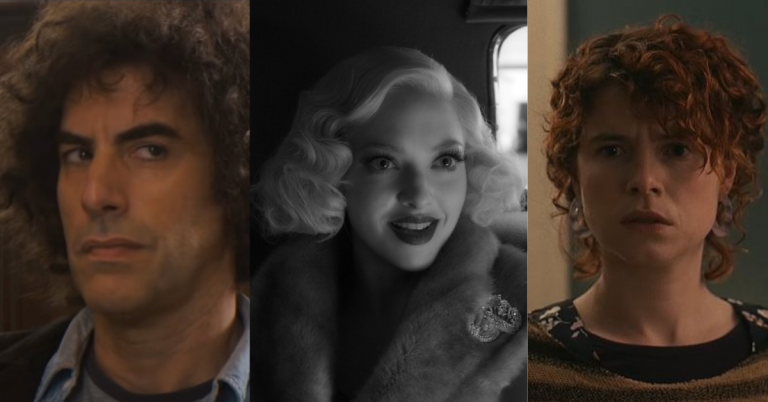
![Who Will Start Another Fire [2021] Review: A Mixed Bag with Powerful Surprises And Incredible Messaging](https://79468c92.delivery.rocketcdn.me/wp-content/uploads/2021/06/NotBlackEnough-768x432.jpg)
